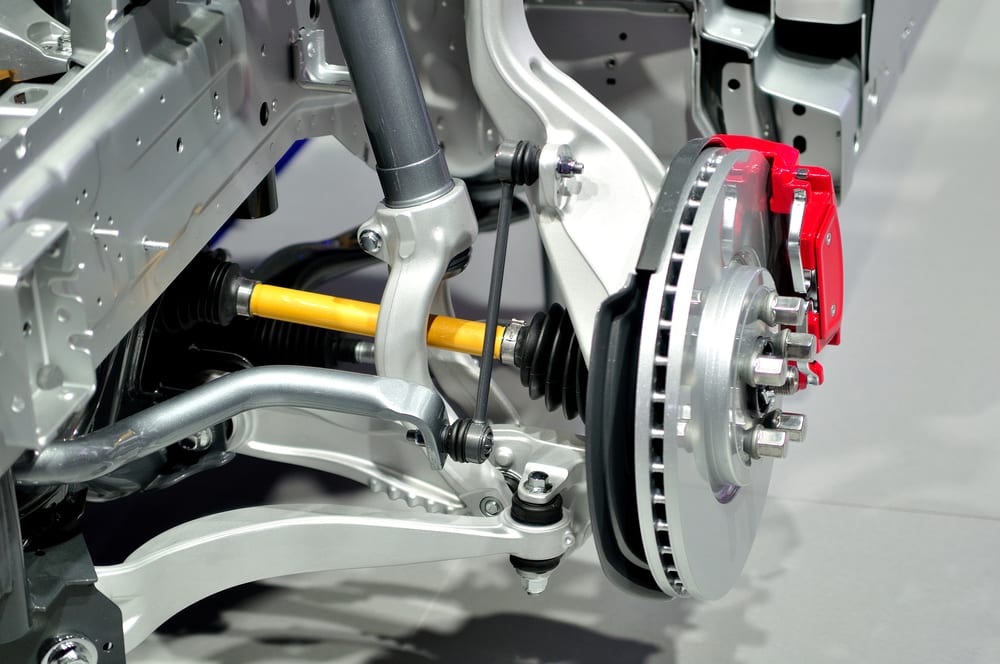

Brake calipers are designed to stop a vehicle just like brake drums, but allow the brake rotor and pads to cool off and drain off water for a more efficient stopping force.
Brake calipers are a disc-braking system the car’s wheels are attached to metal discs, or rotors, that spin along with the wheels. The job of the caliper is to slow the car’s wheels by creating friction with the rotors.
Every time the pads in a disc brake system come in contact with the spinning rotor, they wear down a some. Gradually, the brake pads become thinner and create a gap between the pad and the rotor. To compensate for this, the piston in the caliper emerges from the hollow cylinder where it resides inside the caliper by using brake fluid as an acting hydraulic force. As it does so, it pushes the worn-down brake pads further inward toward the rotor until the pad makes contact with the rotor. When the force is released, the pad tends to release a little distance from the rotor leaving a clearance enough to not engage the pad to the rotor, but also to make it simple for the operator to create the next application to the rotors.
As vehicles tend to age and the brake parts tend to go through heat and cool cycles simultaneously, the calipers tend to become sticky and not want to function correctly. So in the event of grease drying up or having a contamination breach inside the caliper will cause the piston or guide pins to freeze up and stop applying. Brake fluid will still permit a hydraulic force but not enough to move such immensely stuck items.
Also, when the pads are worn down too far, the piston inside the brake caliper will extend its full length of travel. If the pads are worn all the way down to bare metal and the rotors are paper thin, then the piston inside the caliper will push its way through the cavity and extend past the seal causing the seal to tear leaving the piston fully emerged with no hydraulic force and no hydraulic back pressure.
It can be tricky when it comes to changing out a brake caliper. The wheels of the vehicle would need to be suspended in the air having access to the brake calipers. Then, there would need to be a drip pan under the caliper to ensure that the brake fluid will not get onto the ground as it would leave a mess and a stain.
Removing the floating pins from a caliper that have been frozen for a long time may require some strong penetrating oil better than wd40 to loosen up the threads.
After removing the caliper and installing the new caliper, it would be tricky to bleed out the brakes. It is best to mount the caliper into a vise and manually pump in brake fluid to remove as much air from under the piston as possible then plug the hole off. After installing the caliper to the vehicle, make sure that a helper is there to assist in brake pedal operations. The brake line should be installed and the bleeder screw to open all the time. This will allow the brake fluid to escape the caliper and not draw any air in when piston extends out. When the piston is fully extended and the bleeder screw is open with the brake pedal applied, be sure to shut the bleeder screw to prevent any air back into the caliper.
Now it can be even more tricky for the brake system. If the vehicle has a ABS control module, the brake system needs to be bleed according to the bleeding sequence. If there is no bleeding sequence, then start with the farthest bleeding point from the master cylinder all the way up to the master cylinder leaving it for last.



